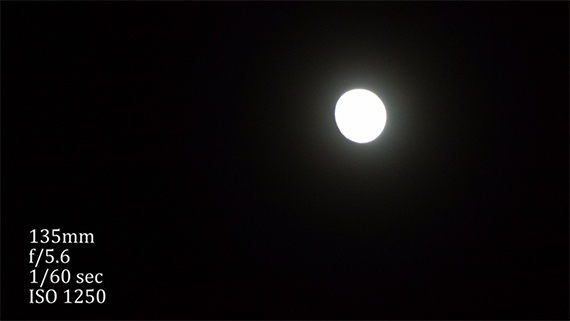They say to always shoot for the moon—but in photography, when you fail, you don’t land amongst the stars. Your moon just looks like an overexposed lightbulb. If you want to up your moon game as a photographer, there’s no better tutorial than this one:
Host Tony Northrup starts off with a Canon 18–135 lens and his camera in automatic mode, and his image doesn’t capture much, since the camera is trying to properly expose the dark sky by blowing out the moon.
But with a simple change of settings in manual mode—to f/8, ISO 100 and a 1/60 of a second shutter speed—everything suddenly comes into focus.
But if you want to really improve your astronomical shots, you’ll need a stronger telephoto lens. Northrup switches to one with a 400mm maximum to get more detail:
As a last step, if you want the sharpest possible lunar image, you should download an app called Registax. There you can combine a vast number of moon shots—hundreds if you like, though 10 or 20 will do just fine—and combine them all to sharpen the overall image. Registax is a little finicky, but Northrup details a step-by-step process on how to use it in the video above.
That’s all there is to it. So from now on, when people tell you to shoot for the moon, you won’t need to worry about anything but.
Like This Article?
Don't Miss The Next One!
Join over 100,000 photographers of all experience levels who receive our free photography tips and articles to stay current:










Very Helpful. I didn’t follow all the stuff about Registax you went to fast and I have Lightroom I just don’t work in it. I’m planning t go to Joshua Tree National Park February 20 so this helped a lot. I’m also interested in your buying guide as I’m not well versed in equipment. Thanks Rachel